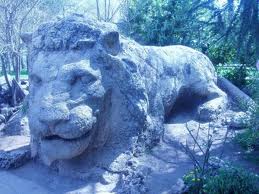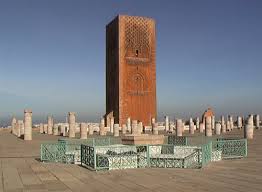
 Visiter la Médina de Chefchaouen
Visiter la Médina de ChefchaouenChefchaouen est une charmante petite ville d'environ 40.000 habitants qui se trouve à environ 100kmde Ceuta sur les pentes des monts Tisouka (2050m) et Megou (1616m) de la Cordillère du Rif, qui s'élèvent au-dessus de la ville comme deux cornes, donnant ainsi son nom à la ville (Chefchaouen en berbère signifie "regarde les cornes"). À environ 660m. d'altitude et avec très peu de trafic de voitures, on y respire un air limpide et frais qui invite à y passer quelques jours pour découvrir la beauté de ce lieu et de son environnement..
La Médina de Chefchaouen - o Chaouen o Xauen - est assez tranquille et petite. si nous y entrons par l'une de ses cinq portes et nous laissons emporter par nos sens, nous nous retrouverons inondés par de nombreuses sensations nouvelles comme les odeurs du pain fraîchement sorti du four à bois ou du tajine prêt à être mangé.
La grande variété de couleurs des différentes produits des magasins et bazars contrastent avec le blanc bleuté éblouissant des maisons. Le mélange des voix et sons inconnus vous guidera au long des ruelles qui serpentent inévitablement jusqu'au point de rencontre et repos, la Place Uta el-Hammam.
Ici à l'ombre du mûrier, on peut se prélasser sur la terrasse d'un restaurant ou d'une cafétéria, tout en observant les allées et venues des passants et la beauté de la Grande Mosquée et de la Kasbah en face.
Quelques pas plus loin se trouve la Place de Makhzen avec l'hôtel Parador et le parking public, d'où l'on peut prendre une ruelle qui mène au nord-est à Bab el-Ansar et à la source de Ras el-Maa, l'un des plus beaux endroits de Chaouen.
On peut alors descendre le long du ruisseau bercé par l'agréable son de l'eau et voir comment les femmes font la lessive et comment fonctionnent encore les moulins hydrauliques. Cette jolie promenade nous mène à Rif Sebbanin, le quartier des lavoirs, avec la Place de Sebbanin et sa mosquée du XVe siècle.
Depuis là on peut poursuivre le parcours jusqu'au centre de la Médina, ou se diriger vers la ville moderne dans la partie basse de la ville, ou en direction de la campagne... ou où te mène ton chemin - que tu fasses de belles découvertes...!
Quelques autres idées pour visiter Chefchaouen:
- visiter les jardins de la Kasbah et leur petit musée qui abrite une petite collection d'armes anciennes ainsi que des instruments, des textiles et quelques photos historiques de la ville; il y a aussi une galerie d'art à l'intérieur des murailles.
- descendre à la ville moderne un lundi ou jeudi pour y connaître le marché où les habitants de la montagne en tenues traditionnelles viennent offrir leurs produits.
- monter à la petite mosquée Jemaa Bouzafar depuis Ras el-Maa pour voir le coucher du soleil.
- ou monter directement dans les montagnes - nous vous recommandons de prendre un guide - pour profiter d'une nature magnifique (plus d'informations dans la section excursions





.



















































